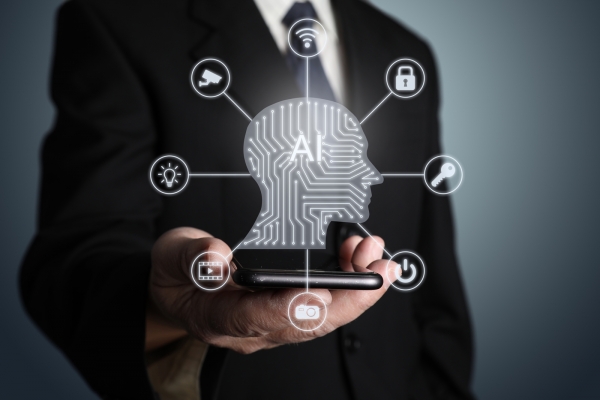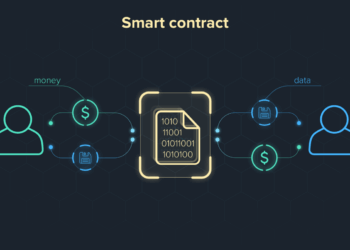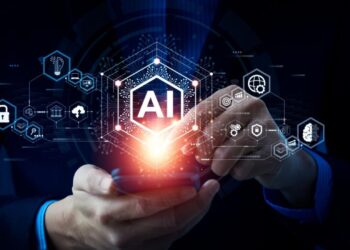In a world defined by its relentless pace and constant demands, the simple act of daily planning has become an overwhelming chore. We meticulously create to-do lists that grow longer by the hour, juggle appointments across multiple calendars, and constantly re-shuffle our priorities as unexpected tasks and meetings inevitably arise. The manual process of organizing our day is time-consuming and often feels futile, leaving us with a static plan that is instantly outdated the moment an interruption occurs. The mental friction of managing our own schedules saps our energy before we even begin the actual work.
The solution to this modern dilemma isn’t to simply work harder or to create a more detailed static plan. The true revolution lies in a new paradigm: partnering with artificial intelligence. AI is transforming daily planning from a manual, reactive process into a dynamic, proactive, and deeply personalized experience. It moves beyond a simple digital calendar to become an intelligent co-pilot, a tool that not only records our plans but actively helps us optimize, adapt, and execute them with unprecedented efficiency. This shift represents one of the most significant changes in personal productivity since the invention of the digital calendar itself.
The Limitations of Traditional Planning

For decades, our approach to daily planning has remained largely unchanged. We relied on linear, static methods that, while helpful, were fundamentally ill-equipped to handle the complexities of our interconnected lives. Paper planners and simple calendar apps are excellent for capturing appointments, but they lack the intelligence to understand context or priorities. They simply present a timeline, leaving the heavy lifting of scheduling, prioritizing, and problem-solving to us.
This reliance on manual effort creates several key challenges:
- Decision Fatigue: Every time you look at a long list of tasks, you are forced to make decisions about what to do next. This continuous micro-decision-making is mentally draining and can lead to analysis paralysis.
- Lack of Optimization: A traditional calendar doesn’t know the difference between a high-priority project and a low-value administrative task. It cannot suggest a more efficient order of operations or block out time for deep, focused work.
- Inflexibility: When a new meeting pops up, the entire day’s plan can be thrown into disarray. The manual process of re-shuffling, moving tasks, and re-evaluating priorities is a major source of stress and wasted time.
- No Insights: Traditional tools do not provide feedback on our habits. They can’t tell us if we are most productive in the morning, which tasks we consistently procrastinate on, or if we are over-committing our time. We are left to guess and correct our habits through trial and error.
These limitations are precisely where AI steps in, offering a dynamic and intelligent solution that not only simplifies planning but makes it a tool for true personal and professional growth.
The Core Functions of AI in Daily Planning
AI is not just a glorified timer or to-do list; it is a sophisticated engine that processes vast amounts of data to create a living, breathing schedule. Its power comes from its ability to analyze your information and provide actionable, intelligent solutions in real-time. Here are the core functions that define AI-powered daily planning:
A. Intelligent Scheduling and Time-Blocking. This is arguably the most transformative feature. Instead of you manually blocking out time for tasks, AI can analyze your calendar, project deadlines, and estimated task durations. It then intelligently slots your tasks into your day, creating a cohesive, optimized schedule. It can automatically batch similar tasks together (e.g., all email-related tasks, all phone calls) and find the ideal blocks of “deep work” time to fit into your day. This automation removes the guesswork and the time spent on planning, allowing you to focus on the work itself.
B. Dynamic Prioritization and “Smart” To-Do Lists. AI goes beyond simple “due dates.” It can learn to prioritize tasks based on multiple factors: urgency, importance, and your personal goals. For example, it can use an algorithm based on the Eisenhower Matrix (Urgent/Important) to automatically flag critical tasks. As new items come in, the AI can automatically assess their importance and re-order your to-do list, ensuring you are always working on the highest-impact tasks.
C. Context-Aware Recommendations. Modern AI planners are no longer confined to a single app. They can integrate with your location and your other digital tools. For example, if you are leaving the office, the AI might suggest completing tasks that are location-specific, like “pick up dry cleaning” or “respond to that message from your home account.” This ensures you are always tackling the most relevant and efficient task for your current context.
D. Habit Tracking and Behavioral Analysis. This is a powerful feedback loop. AI planning tools track not just what you plan to do, but what you actually accomplish. Over time, they learn your unique productivity rhythm. The AI can identify that you are most effective at writing in the morning or that you tend to get distracted after 4 PM. Based on this data, it can provide personalized insights and suggestions, such as “Schedule all creative work before noon for maximum efficiency.” This behavioral analysis turns your planner into a personalized productivity coach.
E. Proactive Dynamic Rescheduling. Life is unpredictable. A last-minute client call or a family emergency can derail the most well-laid plans. AI solves this problem instantly. When an unexpected event is added to your calendar, the AI automatically re-shuffles the rest of your day’s tasks, finding the next best available time for each item. This feature eliminates the stress and time wasted on manual adjustments, ensuring you can adapt to change without losing your grip on your schedule.
F. Proactive Reminders and Nudges. Beyond simple alerts, AI provides intelligent reminders that are rich with context. A reminder might say, “You have a presentation due on Friday, let’s block out 30 minutes to review the slides now,” or “Your meeting with the client is in 10 minutes, you have time to finish this quick task.” These proactive nudges help you stay on track and maintain momentum throughout the day.
G. Seamless Integration with Your Digital Ecosystem. AI-powered planners are designed to be a central hub. They can pull tasks directly from your email inbox, add events from your calendar, and even pull project milestones from your collaboration software. This ensures that your single source of truth for planning is always up-to-date and that nothing falls through the cracks.
Implementing AI into Your Daily Workflow

The transition to an AI-powered planning system can feel intimidating, but it’s a straightforward process that will yield significant returns.
A. The Initial “Brain Dump.” Just as with any new productivity system, you must start by getting everything out of your head. Write down all your current projects, tasks, and commitments in a single list.
B. Feed the Machine. The more data you provide your AI, the smarter it becomes. Import your calendar, your project lists, and any other relevant information. Tag your tasks with deadlines, priority levels, and estimated time to complete.
C. Let the AI Do the Heavy Lifting. Once your data is in, allow the AI to build your initial schedule. Trust its suggestions and follow the planned flow for a few days. You will be surprised by the logical and efficient schedule it creates.
D. The Power of the Weekly Review. AI is a partner, not a dictator. Use your weekly review to check in on the system. Did the AI schedule things correctly? Did the suggested times work for you? Use these insights to provide feedback to the AI, helping it learn and become even more personalized over time.
The Future of AI and Personal Productivity
The current generation of AI-powered planners is just the beginning. The future of daily planning is even more exciting, with potential developments that will make our lives more streamlined than ever before. We can expect to see:
- Predictive AI: Tools that can predict potential roadblocks or scheduling conflicts before they even happen. For example, the AI might see a team meeting on the calendar and proactively reschedule a personal appointment to a time that will not clash.
- Biometric Integration: AI could eventually integrate with biometric data from smartwatches to detect signs of mental fatigue, suggesting timely breaks or shifting tasks that require high concentration.
- Generative AI for Task Creation: Instead of you manually breaking down a project like “plan a marketing campaign,” a generative AI could automatically create a list of actionable sub-tasks, complete with suggested deadlines and resource allocation.
- Team and Collaborative Intelligence: AI that can not only optimize your personal schedule but also find the most efficient time for a team meeting by analyzing everyone’s calendars and productivity patterns.
These advancements will take the burden of planning off our shoulders entirely, allowing us to dedicate our full creative and intellectual energy to the work itself.
Conclusion
The evolution from a paper planner to a static digital calendar and now to an intelligent AI co-pilot marks a profound shift in how we approach our daily lives. AI is not here to replace our intuition or our personal judgment, but to augment it, providing a powerful, data-driven foundation upon which we can build a more productive and less stressful existence.
The Daily Planning with AI revolution is about more than just managing a to-do list; it’s about reclaiming our time and mental energy. It’s about creating a living, breathing, and responsive system that adapts to the chaotic reality of our lives, rather than us trying to force our lives to fit a rigid, outdated plan. By offloading the mental burden of scheduling, prioritizing, and constantly adjusting, we free our minds to focus on what truly matters: creative problem-solving, strategic thinking, and meaningful work. This intelligent partnership with technology is the key to unlocking a new level of personal and professional efficiency, a future where we are no longer slaves to our schedules but masters of our time. The journey has begun, and with AI as our guide, a more focused, efficient, and fulfilling life is not just a possibility—it’s a reality within our reach.












